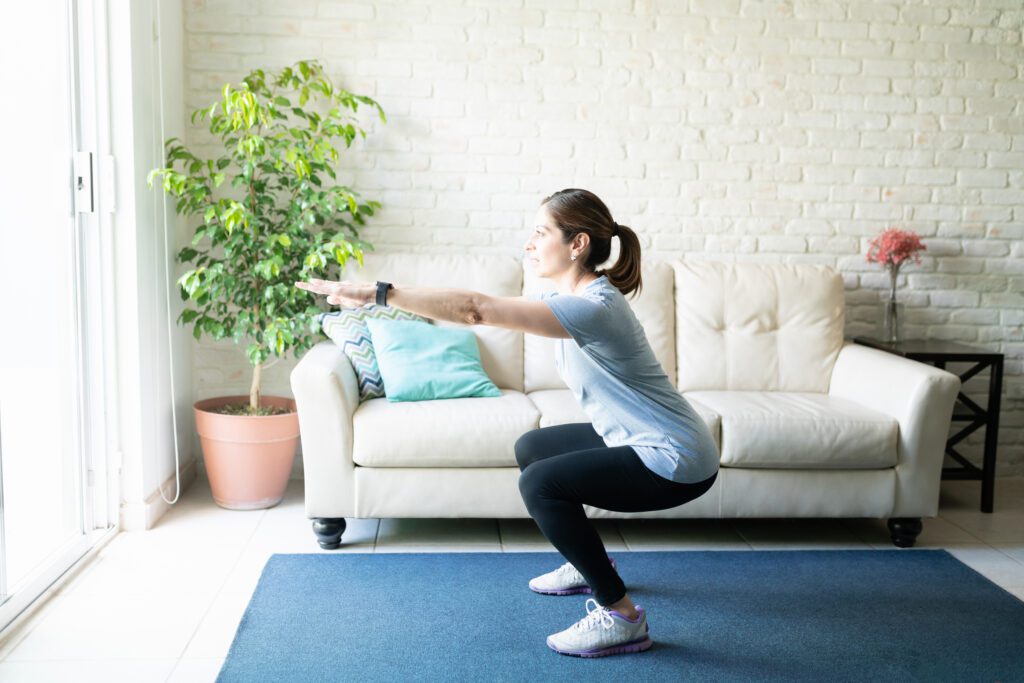Should everyone’s squat look the same?
The squat is widely known as one of the best strengthening exercises for engaging multiple muscle groups at one time. It can be found as a staple in most training programs for anyone from beginner to experienced lifters in a range of different ages.
Classically “Textbook” Squat form dictates that perfect technique looks like squatting deep below parallel, keeping your knees perfectly aligned with your feet, torso staying upright and your toes pointed slightly out at shoulder width stance. However, everyone is different anatomically and it is unrealistic for everyone to strive for this perfect technique if their anatomy won’t allow it. For example, a taller squatter will likely have to squat with a more forward lean than shorter squatters who will stay more upright, likely due to their shorter femurs relative to their torso and tibia. So just because you are unable to achieve the perfect looking squat, this does not mean your technique is dangerous or you won’t get the benefits from squatting with load.
Having said this, this also doesn’t mean we shouldn’t be looking to modify your technique when needed. Optimising your technique can be useful for performance enhancement if we are
plateauing and struggling to increase weights, resulting in a more efficient squat leading to further strength progressions. As well as this, we can also modify someone’s technique to
train around pain or an injury, for example a flare up of LBP.
If you are someone who doesn’t squat with weight for any of the reasons below:
- Feel like your technique is holding you back from progressing with your squats?
- Have pain somewhere when you are squatting with weight?
- Have never done squats before and are unsure where to start
then you may benefit from an assessment by one of our physios in the gym setting. Our physios here at Burleigh and Broadbeach Physio centres have specialist knowledge in knowing how or when to modify someone’s squat technique based on pain or anatomical limitations to help everyone get the most out of their squats!
Some examples:
- Patient A has a hip shift to the right when he squats which means an excessive, unintentional, lateral movement of the hips and their weight shifting to one side while they squat. And it’s important to highlight that again this isn’t an immediate cause for concern and isn’t going to cause any sudden injuries, however a hip shift could be something our physios would look at changing, if Patient A was experiencing pain or plateaus in his training.
- There are a variety of different reasons that could cause a hip shift such as muscle imbalances, poor core stability, reduced ankle mobility and more. So, through detailed assessment of Patient A’s squat technique, screening each of his joints for any excessive limitations in joint range or muscle strength, our physios could help Patient A identify areas of weakness, as well optimise his technique to ensure efficiency so that he can continue to squat comfortably and continue to work on his strength progress pain free.
- Patient B is a lady who struggles with flare ups of (Lower back pain) LBP but has been consistently squatting with weight for over a year now. She is finding she is struggling to progress her weights and recently squats have started to flare up her back for a few days after each session. By assessing her technique and screening Patient B for imbalances etc, we found that patient B has limited ankle mobility into dorsiflexion bilaterally.
- A solution for this could be regular ankle stretches into dorsiflexion, as well as providing her with a simple wooden block to put under her heels while squatting, demanding less ankle dorsiflexion to hit her normal depth. By doing this, we were then able to then modify Patient B’s squat so she can stay more upright with her torso, which coupled with a short-term reduction in load and progressively building back up, Patient B is now able to squat the same weight and more with reduced/none LBP.
So, to summarise, no, everyone’s squat doesn’t need to look like the ideal perfect squat and everyone can certainly enjoy the benefits from squatting with weight safely even if your technique
doesn’t look as pretty as others. However, if you are someone who feels like your technique is holding you back with your performance or causing you pain when you do squat, our physios here
can certainly help you with this. If this is you, feel free to book an initial with one of our physios and we can work it out together!








